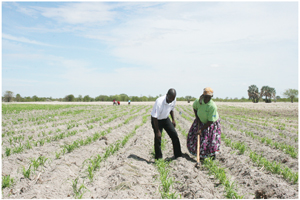
Beef exports find alternative to EU market
The Ministry of Agriculture, Water and Forestry announced this week it has finalised an agreement for the export of beef to China. The protocol was singed on 03 August in Windhoek.
The signed Protocol on Veterinary Health Conditions and Quarantine makes way for the exportation of beef to mainland China likely via Hong Kong as the port city acts as a trading hub.
This opens up an alternative market for Namibian beef as China is the worlds largest consumer market which can take up all of the country’s beef exports.
The signed protocol contains all the import requirements to be met by farmers and abattoirs before certification by veterinary services for export.
The Minister of Agriculture, Water and Forestry, Hon. John Mutorwa said at the announcement of the protocol that all stakeholders should collectively pursue the opportunity presented by this market.
“Proactively guard our interest, good name and reputation in that market, working hard to send the volume of beef required by the Chinese market.” Mutorwa said urging all livestock producers, particularly those who focus on beef for the export market in the EU, to take up the opportunity offered by the vast Chinese market.
“Namibia joins the ranks as one of the ten countries and the only one in Africa allowed to export beef to this lucrative market because of the country’s internationally recognised veterinary control systems.”
The ministry said in a statement that unlike the European Union, Switzerland and Norway, access to China under the new export protocol, will allow the importation into China of bone-in beef.
“The fact that Namibia can export bone-beef will hopefully allow for producers to send bigger volumes of beef at a lower processing cost into the Chinese market allowing for producers to get more money for their livestock.”
The ministry said all cattle eligible for export should be born and raised in foot and mouth disease free zones where vaccination is not practiced. These animals must also bear a unique identification mark, and should be traced back to farm of origin.
“The farm should comply with the conditions that the farm has not introduced any cloven-hooved animal from the region other than FMD-free zones, and that this was not done in the 12 months preceding the slaughter date. Further, animals have to be resident on the farms for at least 60 days before slaughter and that the livestock is vaccinated against Anthrax using live vaccine during the 14 days prior to slaughter.
The animals should also not be fed with any materials originating from other ruminants, except milk, and never used veterinary medicine and feed additives prohibited by either China or Namibia.











































